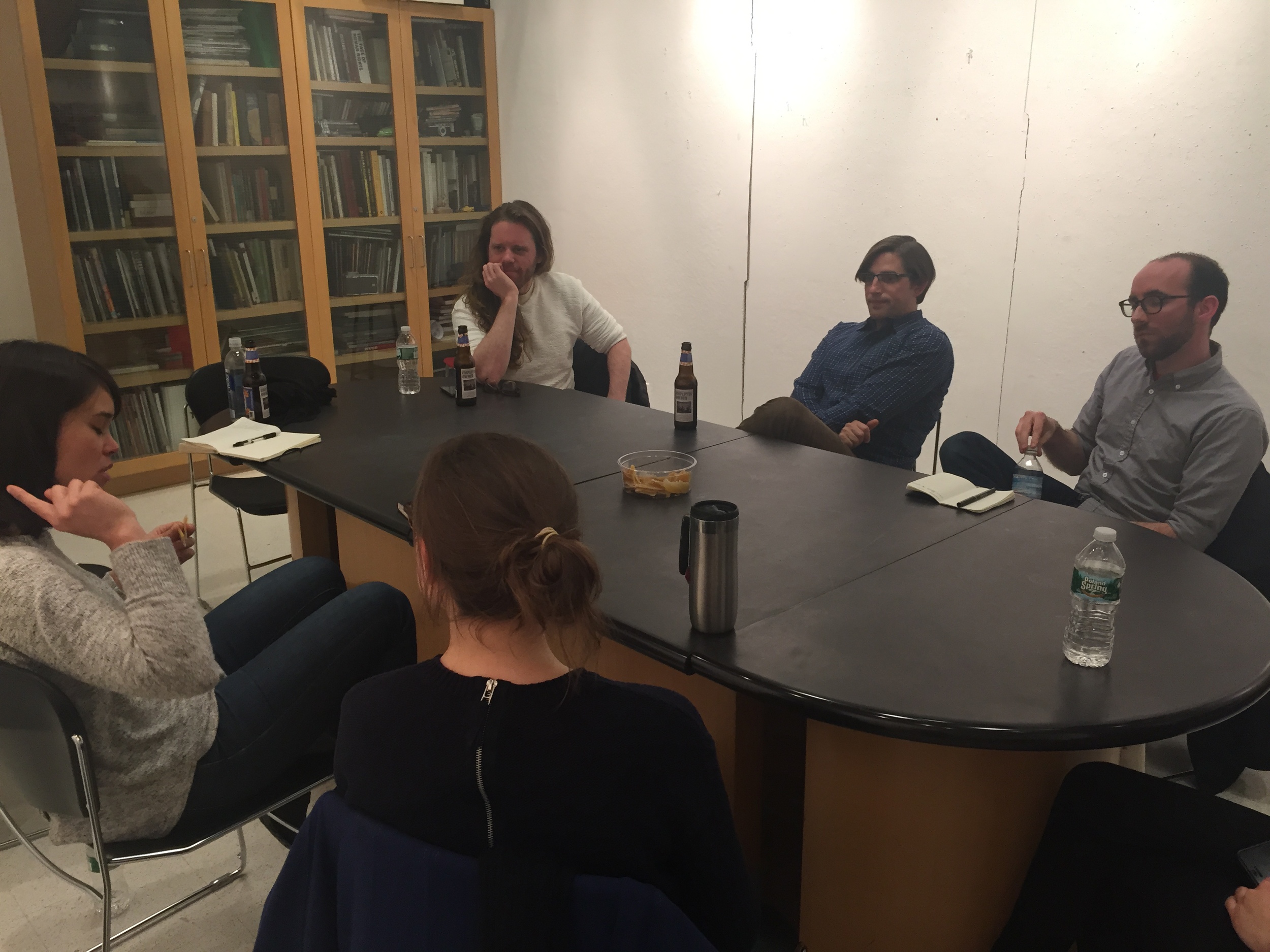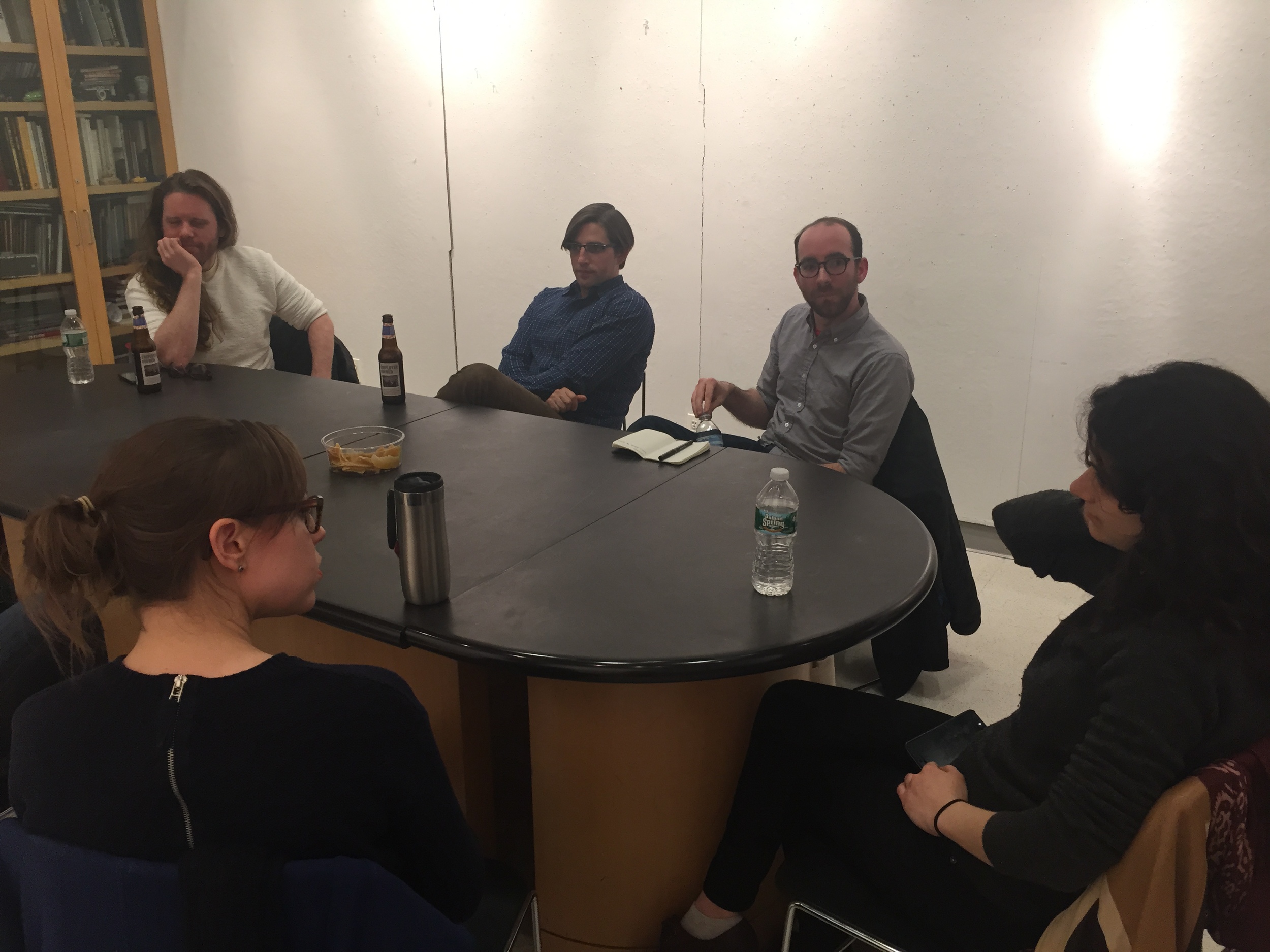Please allow 30 seconds for the audio to load
- Are you a responsible or careless artist (materially, socially, affectively, etc.)?
- What aspect of your practice determines the authorship of your work? Is authorship of your work important?
- What is the responsibility/role of the artist? How do we rely on our audiences?
Amie Cunat generously welcomes the group to Fordham University where she serves as adjunct professor of painting and drawing. She begins the conversation on responsibility by asking whether we believe we are responsible or careless artists. Several people claim they are careless and we begin to unpack the definition of responsibility. Amie describes how her process relies on intuition which she equates with a sense of carelessness whereas responsible work airs on the side of being methodical. Doug Johnston recalls being told that choosing a career as an artist is the most selfish path you can take while Rita Leduc remembers an old friend telling her that making art and sharing it with the world is the most selfless act. Michael Loverich, coming from an architecture-based practice, talks about how he pursues carelessness in his work as a response to the strict codes that licensed architects have to abide by. Amie questions how we are responsible socially, affectively or toward materials. Farideh Sakhaeifar explains how she believes that it’s important to stay connected to what’s happening in the world and react to it. She says that making her work is the way in which she is able to react. Piotr Chizinski describes his practice being rooted in a responsibility toward the life cycle of his materials and their ability to biodegrade while Amie explains that her responsibility toward materials deals with their physical presence through the absorption of light that occurs in matte surfaces. Amie goes on to question the group about their relationship to authorship. She talks about her practice relying on her hand and the kinds of marks that only she can make. Piotr says that authorship is not important in his work because evidence of the hand does not exist but Rita asks him to consider how even though the hand may not be there, there is still a stylistic element that engages ideas of authorship. We begin to see how the idea of authorship is bigger than just evidence of the hand. Doug talks about how he tries to give the materials and the process an equal role in his work. He describes his practice as a collaboration between himself, the sewing machine and a rope similarly to a band making music together. Rita talks about her pursuit of finding presence through questioning how her environment affects the types of marks she makes versus the types of marks just her body makes. She describes wanting to conflate all the variables of space, time and place together while also trying to isolate which part is just her. Amie’s last question is about how we rely on our audiences to help us carry out our responsibilities. We talk about work which is inaccessible and how to establish lines of accessibility between the maker and the audience. Farideh says that it’s necessary to trust the audience and give them enough information for them to want to learn more on the topic or spend more time with the work. On a closing note, Amie explains how our culture is littered with images that are usually copies of copies of things whereas art provides an actual presence and experience.





